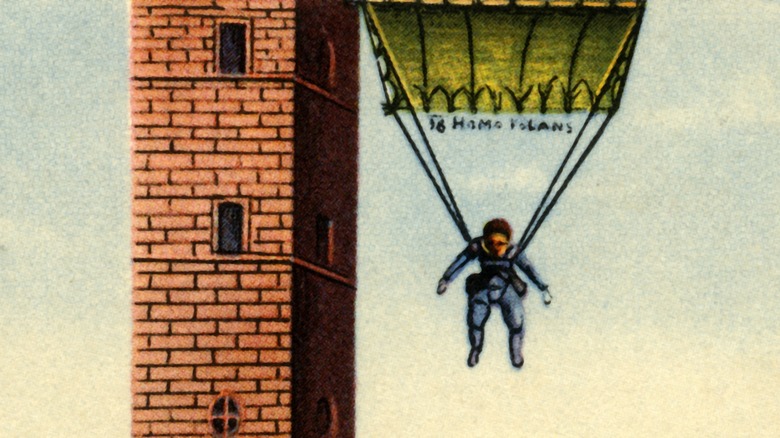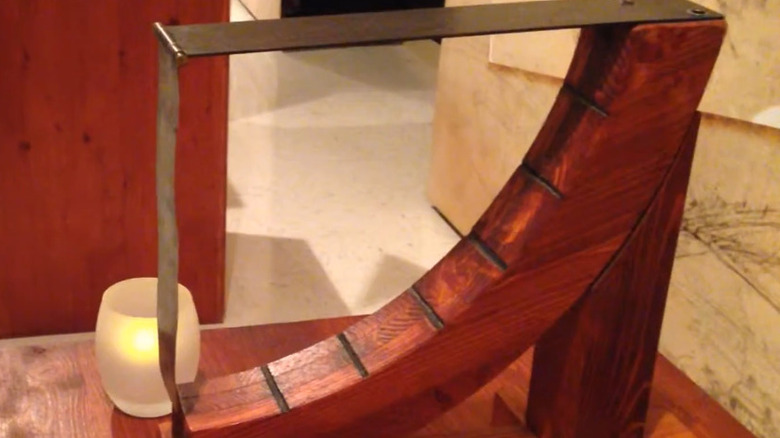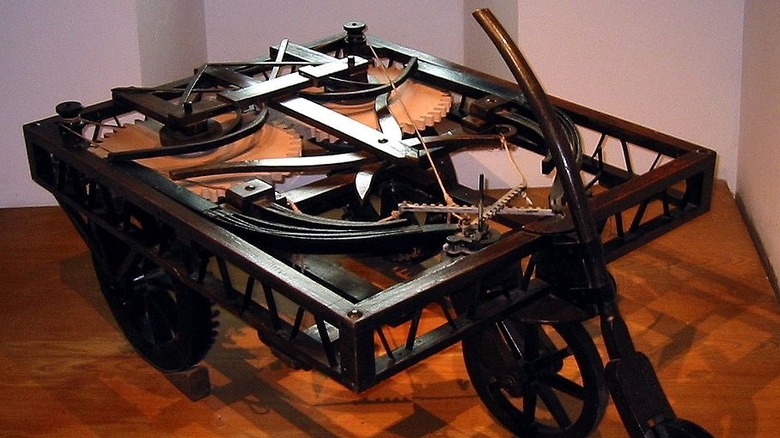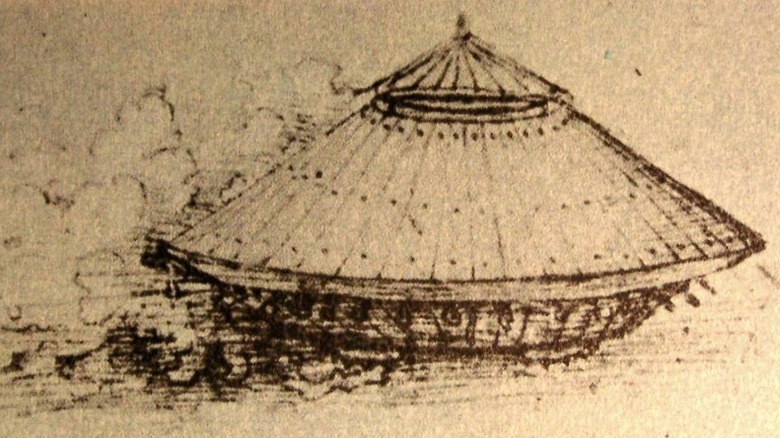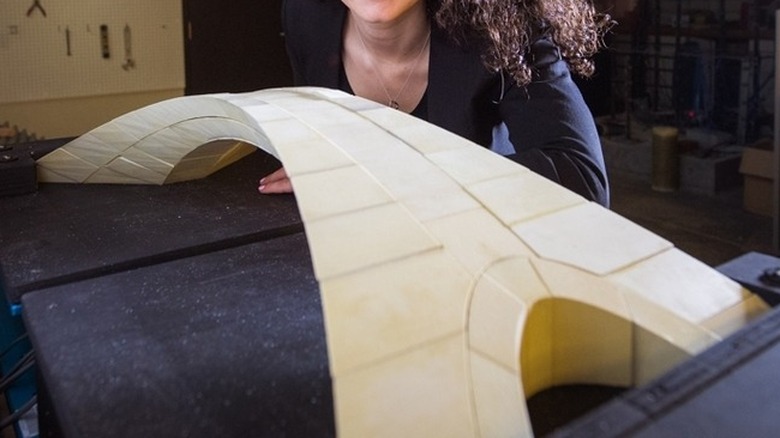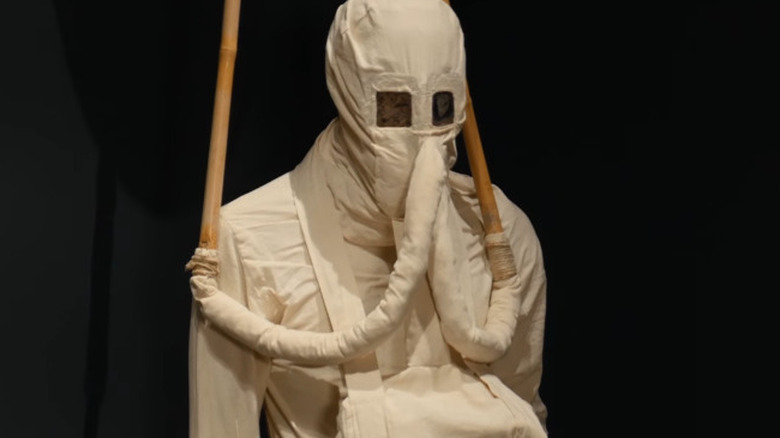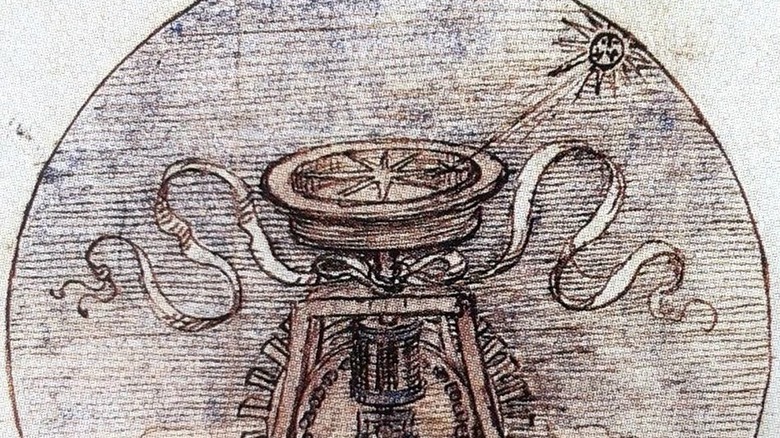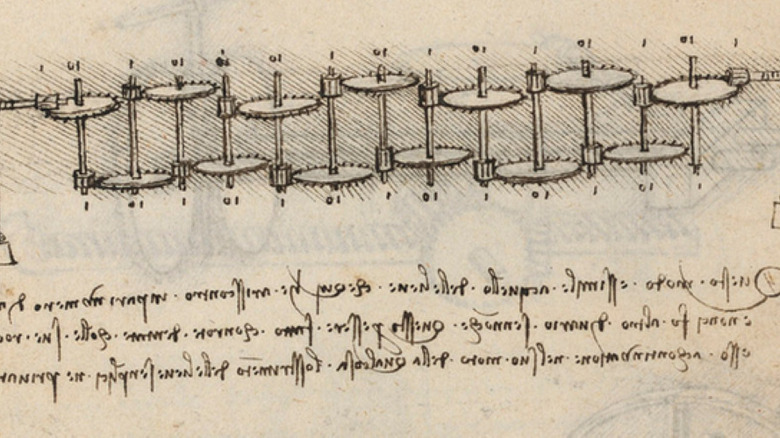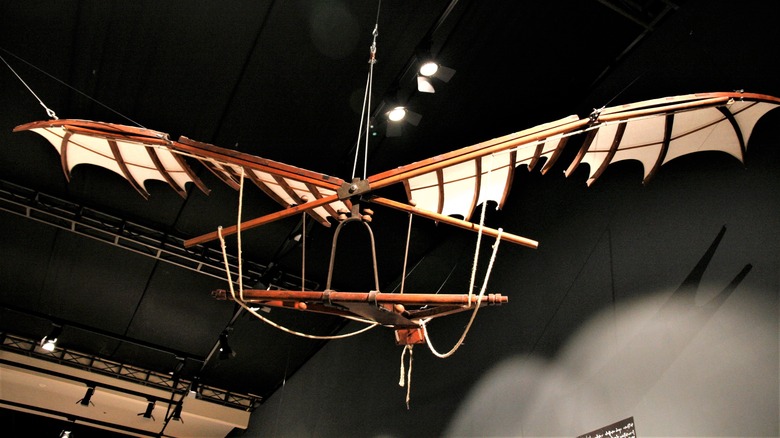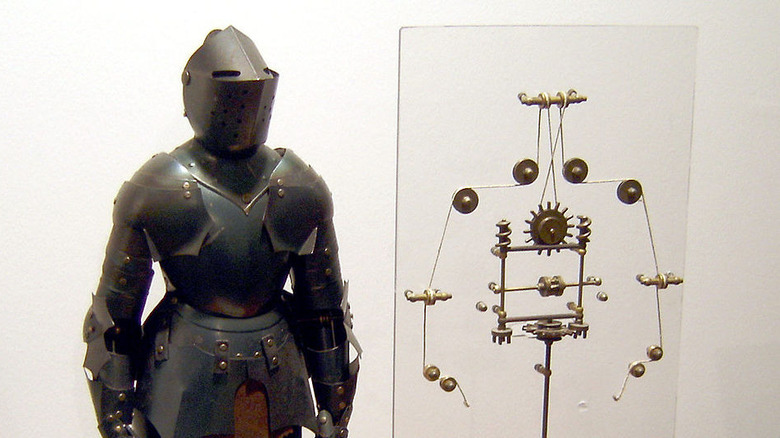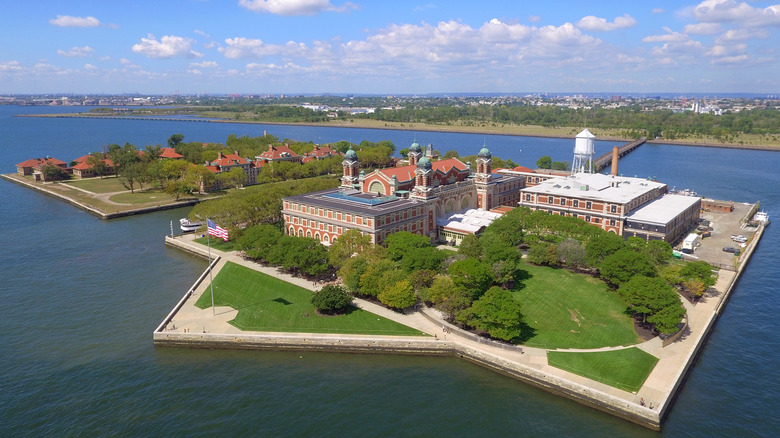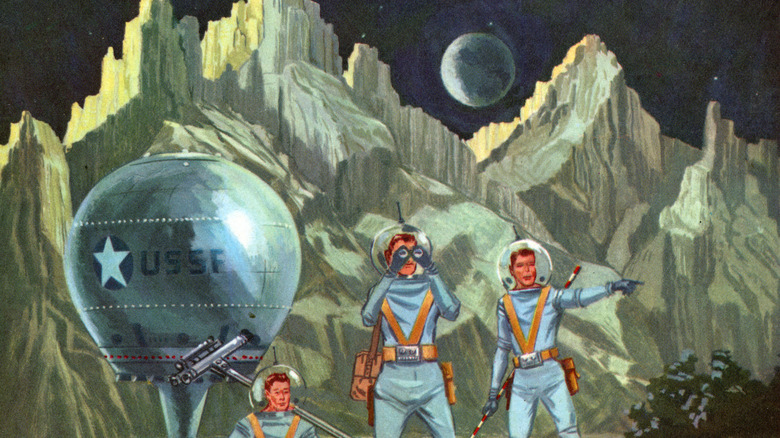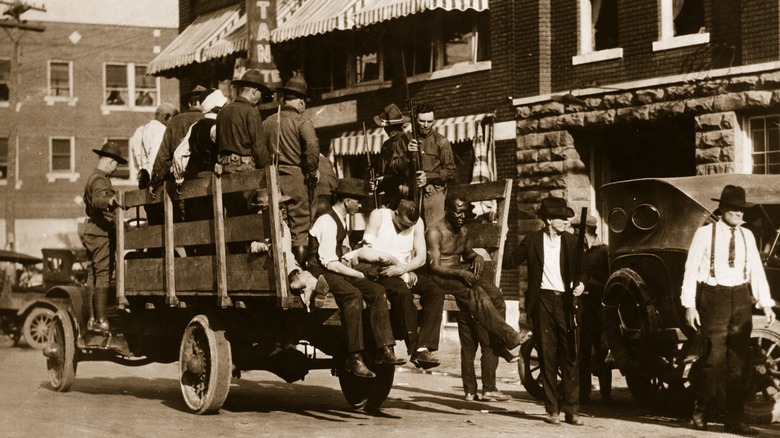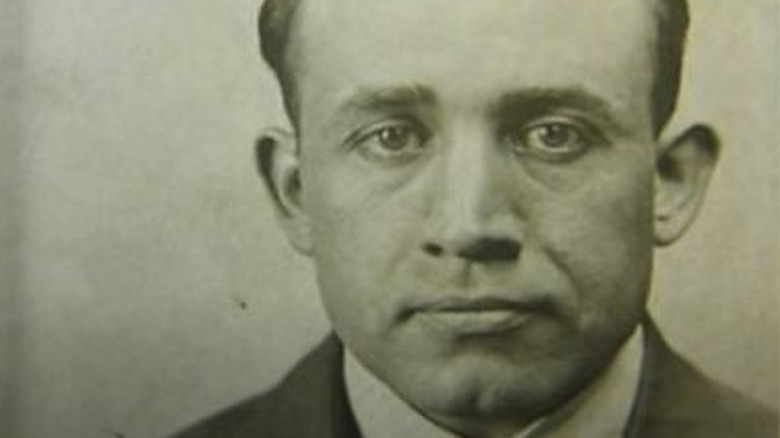
12 Best Leonardo Da Vinci Inventions
The Mona Lisa tends to be one of the first things that come to mind when the name Leonardo da Vinci is mentioned. This is likely why the so-called Renaissance man is strongly associated with painting. However, there are fewer than 20 paintings still in existence that experts can confirm were made by the legendary polymath, including some that were never finished (via Britannica).
Interestingly, evidence points to da Vinci being a more prolific inventor and designer than painter. The Codex Atlanticus consists of 1,119 papers that contain da Vinci’s numerous sketches and concepts for what could have been his real-world inventions (via Google Arts & Culture). The collection reportedly spans da Vinci’s life from 1478 to 1519, and contains ideas pertaining to architecture, mathematics, hydraulics, and more. According to the Smithsonian Air & Space Museum, da Vinci’s notes contained illustrations of structures, armaments, and vehicles, as well as mechanical contraptions intended to make human flight possible. Unfortunately, for reasons that many of today’s artists could likely relate to, almost none of da Vinci’s impressive ideas became reality, either because he lost the will to follow through with them or didn’t have enough funding to actually build them. In addition, he never published any of his notes; had they not been discovered years after da Vinci’s demise, they would have been lost to time.
Regardless, da Vinci’s sketches prove that he was, in many ways, ahead of his time. Here are a few of the best concepts and inventions from the Italian genius.
Parachute
One of Leonardo da Vinci’s ideas that surprisingly predated a modern technology was the parachute. There’s no evidence that da Vinci actually built and tried it, and many credit French aeronaut Louis-Sébastien Lenormand as the first person to make a practical parachute descent in 1783. Still, the fact that da Vinci drew up his own plans a couple of centuries earlier is pretty impressive.
According to da Vinci Inventions, the inventor’s parachute sketch came with a description explaining how it would work. As per da Vinci’s notes, the parachute (or “tent”) would have been made of linen, and would have measured approximately 23 feet long. Despite the triangle-shaped canopy and rather heavy wooden frame — two factors that today’s experts believe could have seriously affected its functionality — the inventor stated in his writings that its user “will be able to throw himself down from any great height without suffering any injury.”
In Croatian inventor Fausto Veranzio‘s 1616 book “Machinae Novae,” he included an illustration of a man wearing a parachute reminiscent of da Vinci’s design. The sketch (pictured), which was labeled Homo Volans (“The Flying Man”), contributed to the belief that he was actually the first man to build and test a modern parachute. However, no evidence supports this claim, according to the tourism website of Croatia. In 2000, the late British skydiver Adrian Nichols built and tested da Vinci’s parachute, and proved that it worked (via ZME Science).
Clock
Leonardo da Vinci’s clock demonstrates the Italian polymath’s knack for taking existing concepts and making them better. During his time, clocks displayed hours and minutes, but they were far less accurate compared to subsequent time-telling devices, largely because the pendulum was still two centuries away from being incorporated into clockmaking (via da Vinci Inventions). Meanwhile, da Vinci’s sketch of his redesigned clock reveals that he came up with a way to improve the gadget’s precision through a combination of creativity and mechanical know-how.
The reimagined clock contained a series of small parts — gears, harnesses, and weights — that made up two separate mechanisms. One mechanism was in charge of the hours, while the other setup counted the minutes. The clock could also let its owner monitor the phases of the moon via an attached dial. Interestingly, da Vinci’s clock also had some unconventional components in the form of rocks and diamonds.
Perhaps the most significant change in da Vinci’s design, however, was the means through which it was operated: Unlike other clocks at the time, da Vinci’s device would be operated by springs. This design choice turned out to be so effective that today’s clock and watch manufacturers still include springs in their products (via Leonardo da Vinci).
Anemometer
Another existing invention that Leonardo da Vinci improved upon was the anemometer, an instrument for measuring wind pressure and speed that is still useful for today’s weather experts (via National Geographic). The original design for the anemometer came from Italian architect Leon Battista Alberti in 1450, while da Vinci probably came up with his version about three decades later (via da Vinci Inventions).
The base of da Vinci’s anemometer is shaped like an arc, with a scale printed on it. At the center of the piece, a wooden rectangle is suspended via a hinge, moving along with the wind. The value for the wind’s force would depend on which point or notch on the scale the dangling wooden rectangle reaches.
It’s likely that part of the reason behind this innovation was da Vinci’s undeniable fascination with human flight. According to The Leonardo, da Vinci’s anemometer concept was significantly more effective than the existing design, and was designed “for measuring distance traversed per hour with the force of the wind.” In da Vinci’s mind, perhaps, this could have helped subsequent attempts at flight become successful, as it could give people a better picture of the wind’s direction prior to takeoff.
Self-propelled cart
It might be strange to imagine that someone from Leonardo da Vinci’s time could come up with the precursor to self-propelled vehicles. However, that’s exactly what da Vinci’s sketch from 1478 suggests. The artist and inventor may have been the first person to actually draw up the plans that would eventually inspire NASA’s Mars Rover (via Leonardo da Vinci).
The illustration depicts an open-top cart with three wheels, measuring 5 feet 6 inches in length and an inch short of 5 feet in width. It was designed to continuously move on its own, without requiring someone to push it. Two large coiled leaf springs regulated a drive mechanism underneath the three-wheeler, while brakes connected by a hidden rope could let an operator from afar stop it at will. Apparently, this “automobile” also had steering capabilities; the sketch suggested that aside from moving forward, it could make right turns, albeit at preset angles.
Due to the intricate nature of da Vinci’s self-propelled cart sketch, people who tried to figure out how it could work had trouble understanding it. Furthermore, they concluded that da Vinci didn’t intend for the vehicle to be built for transport, but for entertainment purposes. In 2006, a team of experts under the guidance of Florence’s Institute and Museum of the History of Science came together and constructed the cart (based on previous attempts to realize da Vinci’s design), proving that it could work.
Armored Car
A number of Leonardo da Vinci’s designs showcased tools for warfare that were quite remarkable for his time — which is ironic, considering how the painter and investor was reportedly a “pacifist at heart” (via da Vinci Inventions). Experts believe that to be the reason why his armored car design, which many consider to be the grandfather of today’s tanks, had a glaring mistake that a man with such precision and vision was highly unlikely to commit.
According to The Leonardo, da Vinci’s proto-tank was designed to move in any direction. This behemoth of a machine required at least six people to operate from within, and its size and visage were intended to break even the most solid enemy soldier formations. (Given how da Vinci’s sketches make it appear like an alien spaceship on wheels, it certainly does look fearsome.) It sported a circular platform armed with light cannons, which could turn a full 360 degrees. It also had slanted metal plates serving as protection, as well as a sighting turret for aiming and steering.
For all of its power, however, it had a significant design flaw: based on the way its powering cranks were drawn to move, the armored car wouldn’t be able to move forward. Historians believe that da Vinci incorporated this flaw into his design on purpose, to prevent anyone from actually using it.
Bridge
When Sultan Bayezid II formally announced his need for someone to design a bridge that would connect Galata (now Karakoy) with Istanbul, Leonardo da Vinci quickly whipped up a concept in his sketchbook and mailed it to the ruler (via MIT News). Much like his other ideas, however, da Vinci never let the technological limitations of the era get in the way of his creative output — which is why it’s unsurprising that the Sultan passed on what was essentially a proposal to build would have been the world’s longest bridge at the time.
Based on da Vinci’s sketches, the bridge would have reached over 900 feet, and would have stretched over an estuary of the Strait of Istanbul (via Leonardo da Vinci). Unlike other bridges in existence at the time, which used semicircular arches for support, da Vinci proposed a single massive flattened arch with enough clearance for a sailboat. In addition, da Vinci wanted abutments (substructures that support a dam or bridge’s superstructure) to support the bridge and prevent it from swaying and collapsing, which would have been quite the engineering feat at the time.
However, da Vinci’s concept was proven to be viable at least twice, many centuries later. A scaled-down version of this bridge was built in Norway in 2001, and MIT engineers built a small replica of da Vinci’s design in 2019 to show that it was a “strong concept.”
Scuba gear
Two French innovators, Jacques Cousteau and engineer Emile Gagnan, co-invented the Aqua-Lung, the underwater breathing gear that made scuba suits possible (via Live Science). However, Leonardo da Vinci actually came up with his own “diving suit” of sorts back in the early 16th century — one that, had it been built, would have looked like a perfect match for the many unknown horrors under the ocean.
According to Atlas Obscura, da Vinci may have conceptualized his rather nightmarish diving suit — which would have included goggles, a leather suit, a full face mask with two hollow breathing tubes, inflatable wine bladders for oxygen and buoyancy, and even a pouch for urine — to support the Venetians’ efforts in fighting against the Ottoman Empire’s army. Reportedly, da Vinci incorporated his extensive observations about tidal movements into his many diving suit designs. His scuba gear plans were apparently never realized, though, owing to the fact that the Venetians succeeded in fighting back against their invaders.
Similar to his other concepts, da Vinci kept certain details about the suit designs a mystery, to keep them from falling into the wrong hands: “This I do not publish or divulge on account of the evil nature of men who would practice assassinations at the bottom of the seas, by breaking the ships in their lowest parts and sinking them together with the crews who are in them.”
Solar power
A huge part of what made Leonardo da Vinci an unparalleled inventor was his sharp observation skills and impressive grasp of certain scientific concepts. According to Science First Hand, one example is how da Vinci conducted experiments on the thermal effects of life, and concluded that “the Sun warms by its natural heat.” It would be many, many years later before experts confirmed the true nature of the Sun’s nuclear activity, which makes da Vinci’s early understanding of solar energy — and his subsequent predictions of what humans can use it for — quite remarkable.
The Italian innovator conducted experiments with “burning” concave mirrors during his time under the Vatican’s employ (via Business Insider). With this setup, he realized that with concave reflective surfaces, heat from the sun could be redirected and used for practical applications, such as boiling water.
Paleo-Energetique tells the story of how da Vinci reportedly came up with a way to build a gigantic bronze horse through solar-powered welding. Unfortunately, this magnificent horse was never realized, as all of the bronze meant for its construction was reallocated towards manufacturing cannons to help Milan fend off the invading French army.
Calculating machine
As Dr. Roberto Guatelli was skimming through a collection of Leonardo da Vinci’s sketches at the Massachusetts Institute of Technology in 1967, he saw a strange drawing that looked like a calculating machine (via History Computer). It was eerily similar to a different illustration he saw in the Codex Atlanticus, which prompted him to combine the two concepts and build a “hypothetical replica” of the device for the IBM exhibition one year later. In other words, da Vinci may have conceptualized an “adding machine” a century and a half earlier than mathematician and mechanical calculator pioneer Blaise Pascal (via World History Project).
Guatelli’s replica is described as “an early version of today’s complicated calculator.” Oddly enough, it has 13 digit-registering wheels, all of which maintain a constant 10:1 ratio. With each full crank of the calculating device’s first handle, the unit wheel turns to display a new digit (0-9). Because of the consistent ratio, the device is capable of marking tens, hundreds, thousands, and more, just like a calculator.
Still, due to fundamental design differences and certain impracticalities in da Vinci’s sketches, it’s unlikely that his concept for a calculating machine had any significant influence over the more powerful calculators of the modern age.
Flying machine
Despite the abundance of wartime weaponry and oddball concepts in Leonardo da Vinci’s concepts, there’s no doubt that the Renaissance man was obsessed with figuring out how humans can fly like birds and bats. In fact, quite a few of his ideas to give man the power of flight borrowed heavily from avian and chiropteran mechanics, according to Live Science.
In his desire to unlock the secrets of flight, da Vinci patterned his aeronautical inventions after his natural observations. His wooden-framed ornithopter had gigantic wings that flapped up and down each time its operator turned a crank. There’s no evidence that it was ever built, which was perhaps for the best, as it lacked an engine that could help it achieve liftoff in the first place. As the Smithsonian National Air & Space Museum put it: “Imaginative as these designs were, the fundamental barrier to an ornithopter is the demonstrably limited muscle power and endurance of humans compared to birds.”
Meanwhile, many regard da Vinci’s aerial screw as the grandfather of today’s helicopter, even though experts generally agree that it couldn’t have worked. It was essentially a circular platform with blades forming a massive screw. da Vinci envisioned a group of men rapidly pushing the screw, allowing wind to spiral from underneath and push it upward (via Interesting Engineering). Unfortunately, it didn’t take certain important factors into account; for instance, the platform would likely turn along with the screw as the operators pushed it.
Miter gate
While an overwhelming majority of Leonardo da Vinci’s sketches were never turned into reality, some did manage to make it past the concept stage. In fact, one of his ideas was so effective, it remains in use today: the miter (or mitre) lock gate system (via E&T Magazine).
The miter lock gate system was designed by da Vinci for the San Marco lock in Italy, in fulfilment of his duties as ducal engineer under Ludovico Sforza, the Duke of Milan (via Leonardo da Vinci). After the San Marco canal lock was finished in 1497, the Naviglio Grande and the Martesana Canal became connected, further contributing to the work that da Vinci had already done to improve the latter (via Smart Cities Dive).
The original sketch for the miter gate lock is in the Codex Atlanticus. The Linda Hall Library of Science, Engineering & Technology describes it as “the first [canal lock] to show the best form for a water gate, and how another gate within the larger gate could serve to control the flow of water.” This system effectively replaced the old setup, which involved portcullis gates that were so inefficient, at least two men had to operate them. Unsurprisingly, the Panama gates and many other modern-day gate systems were built upon the foundations of da Vinci’s revolutionary lock concept.
Robot
At first glance, Leonardo da Vinci’s resume of innovative ideas may seem full of inventions designed for purely practical reasons. But interestingly, one of the few da Vinci concepts confirmed to have been built was a robotic knight made to entertain friends of the Duke of Milan (via GQ).
Near the end of the 15th century, Duke Ludovic Sforza threw a gala, and instructed da Vinci to come up with a technological marvel to spice up his party. Putting his anatomy notes to good use (and possibly unleashing his inner mad scientist), da Vinci conceptualized and built a humanoid robot clad in a full suit of knight’s armor. Capable of movement through a system of gears and simple machines, the robotic knight could move its head at the neck, wave its limbs, and even move its anatomically accurate mouth (via Live Science). According to Interesting Engineering, the robot could even sit down and stand up on its own. Sadly, neither a prototype nor a full sketch of the knight has ever been found.
Wired reports that roboticist Mark Rosheim actually constructed a functioning prototype in 2002, proving that Leonardo’s party robot was truly impressive for its time. Not bad for something that totally sounds like a ’90s Ninja Turtles toy.

Susan Berman: Disturbing Details Found In Robert Durst's Victim's Autopsy Report

The Truth About The Nun Who Joined The FBI

The Real Reason These Classic Rock Hits Were Never Performed Live

The History Of God Save The Queen Explained

What's Come Out About Eddie Van Halen Since His Death
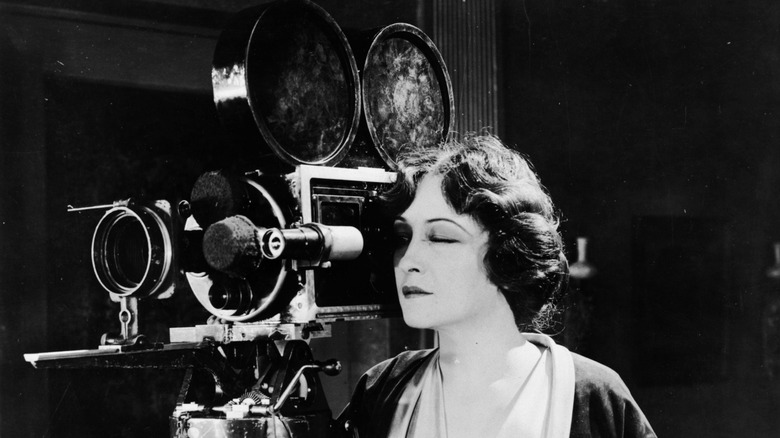
Groundbreaking Female Filmmakers Of Early Hollywood

2032 Summer Olympics: Who Is Hosting?
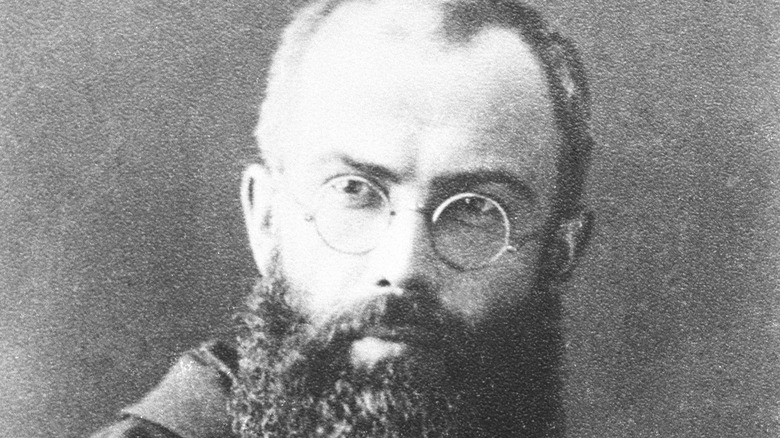
The Real Reason Maximilian Kolbe Was Declared A Saint After Auschwitz

The Real Reason D.A.R.E. Never Worked

What You Didn't Know About Bruce Lee's Affair
